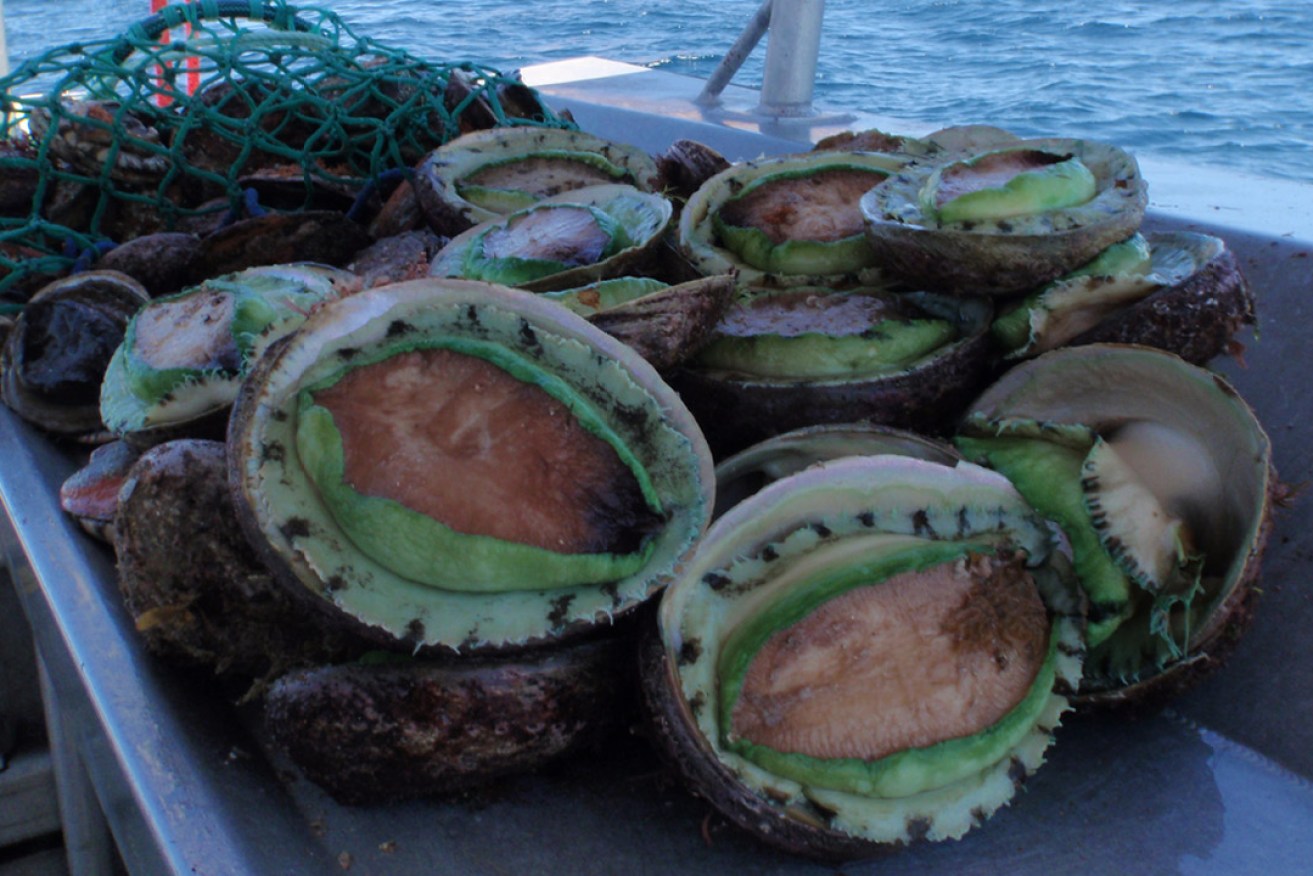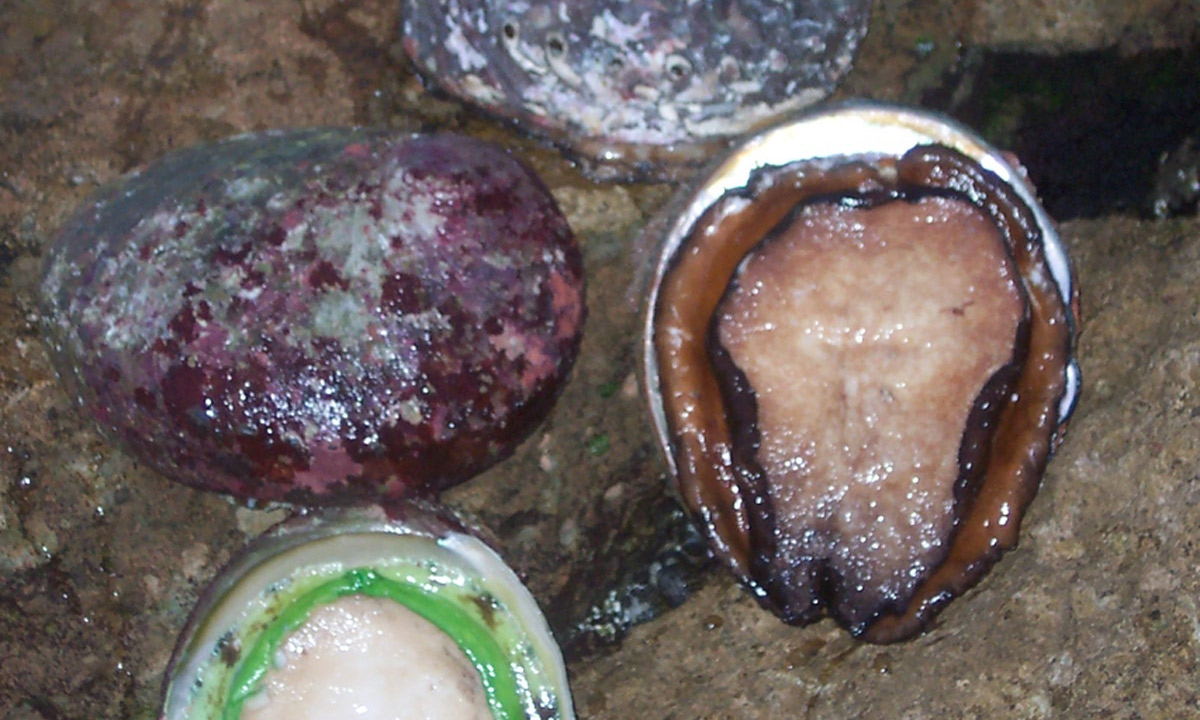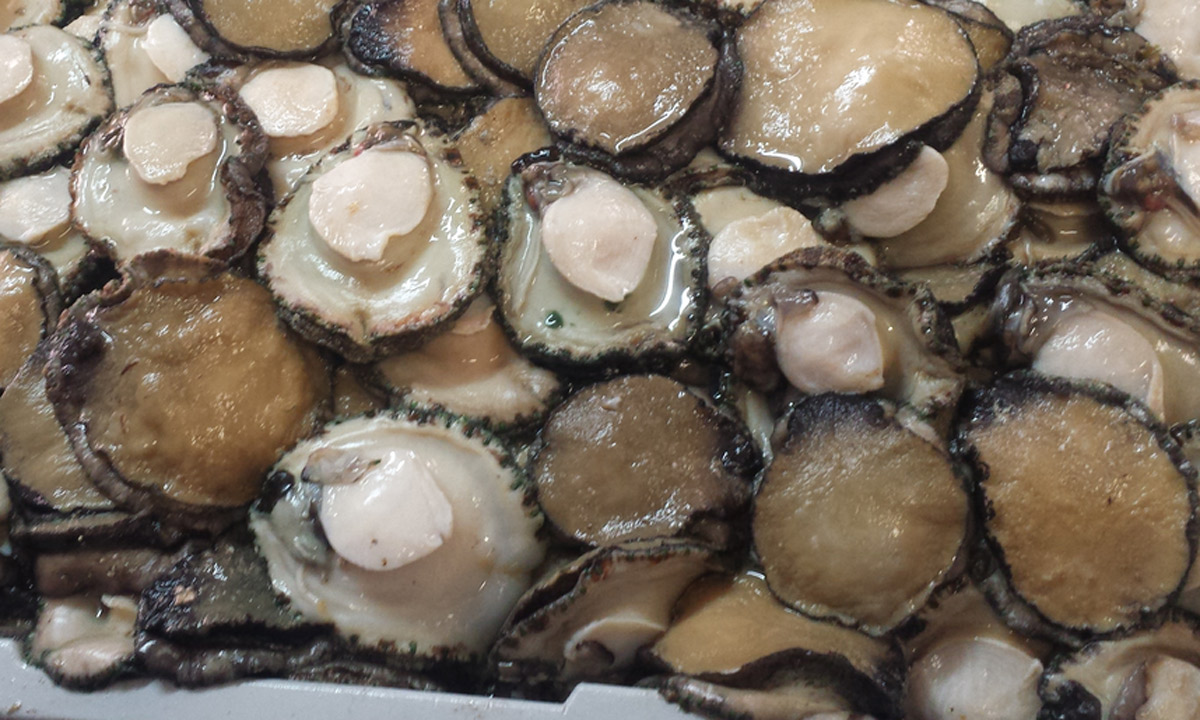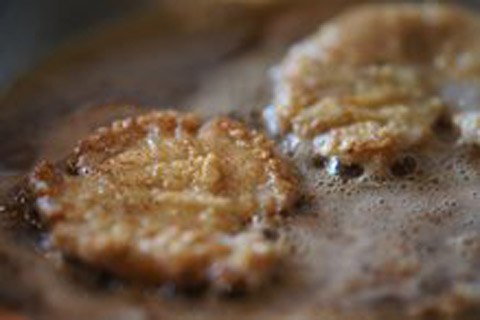Seasonal seafood: Abalone
South Australian wild-caught abalone will soon be available to shoppers in Adelaide and this simple recipe will allow home cooks to to experience the delicacy’s unique flavour.

Wild-caught Greenlip abalone. Photo: supplied
There are more than 100 varieties of this shellfish worldwide, but the most common found in South Australian waters are Blacklip, Greenlip and Roei.
The edible flesh of the abalone is actually the foot muscle which allows it to slowly propel itself in the wild.
When tenderised and cooked, abalone is described as having a mild, slightly sweet flavour similar to lobster and calamari, with a firm but tender texture.
It has generally been unavailable to domestic consumers due to the high export demand and a strict quota management system. Commercial fishing of abalone began in 1964, but by the 1980s a quota management system was introduced to restrict the catch after concerns the resource was becoming exploited. The quota remains in place today and abalone is known to be one of the most carefully managed commercial wild fisheries in the world.
Abalone is hand-harvested by abalone divers using a chisel-shaped metal blade called an “abalone iron” and placed into a mesh bag that is sent to the surface using a parachute. The bag is picked up by the boat operator, with the abalone shucked and gently washed at sea before being chilled and transported to the processing facility.
Many divers use self-propelled shark cages that provide protection from sharks.
Australian wild-caught abalone is a good source of Omega 3, protein, iodine and iron, and is low in saturated fat.
Wildcatch Fisheries SA executive officer Franca Romeo says hand-caught wild abalone from the Great Australian Bight is becoming available to Adelaide shoppers at select Foodland supermarkets next month.
“Wild-caught Blacklip, Greenlip and Roei abalone will be available in Adelaide through the Frewville and Pasadena stores in March as part of a partnerhip with Wildcatch Fisheries SA,” she says.
“We will have abalone divers in store to talk to shoppers about the different types of abalone found locally.”
A box of abalone will be sold to the highest bidder at the next SEAsonal SEEchange auction at 7am on February 24 at the Safcol Central Fish Market, 54-58 London Road, Mile End.
SEAsonal SEEchange is an initiative of the Wildcatch Fisheries SA, a collective of local fisherman who give back to the community by making the first box of seasonal produce available for sale at a monthly auction at Safcol Central Fish Market in Mile End. The proceeds of the auction go to charity.
Romeo has supplied this simple entree recipe for pan-fried abalone.
Pan-fried Abalone Steaks
Ingredients
1 abalone, shucked and trimmed
1 egg, lightly beaten
1 tablespoon fino sherry
½ cup plain flour
Salt flakes and cayenne pepper, to taste
50g butter
1 lemon
Method
Slice abalone horizontally into 4 steaks. Place between 2 freezer bags or cling wrap and pound both sides gently with a meat mallet for a minute or two.
Beat sherry into egg. Season flour with salt and cayenne. Dip abalone slices into egg then into flour, shaking off excess.
Heat butter in a frying pan and, when sizzling, add abalone and fry for about 1 minute each side, until golden.
Serve with a squeeze of lemon juice.
Serves 2 as an entree.
For more information, visit the Wildcatch Fisheries SA website or call 7221 1960.







